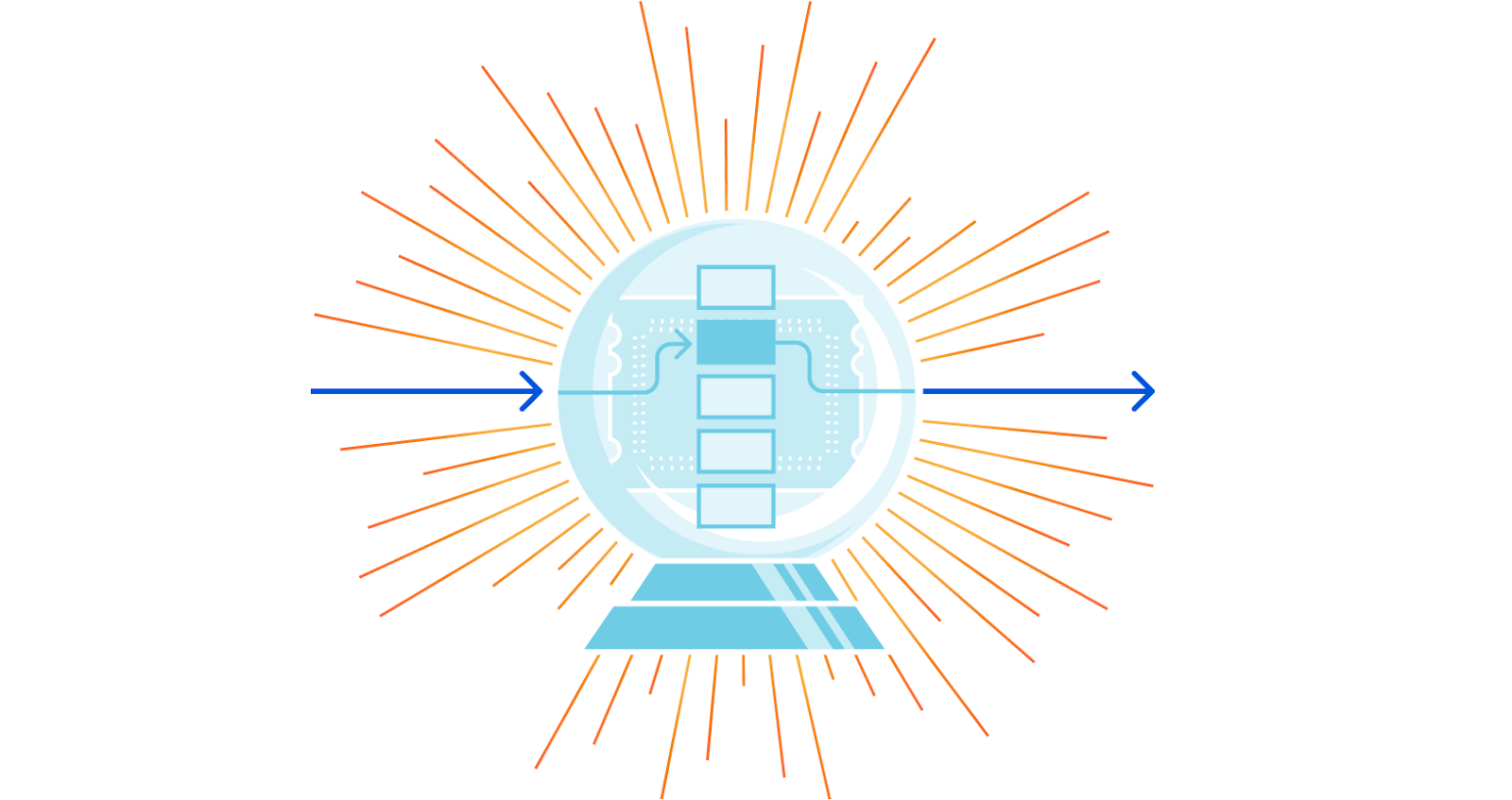Prisma Access 2.0 Enables Painless Migration From Hardware Web Proxies
This guest post is by Drew Conry-Murray on behalf of Palo Alto Networks. We thank Palo Alto Networks for being a sponsor. Prisma Access, which delivers security services via the cloud, has added an explicit proxy feature in the 2.0 version. This feature can help companies migrate off of hardware-based proxies while still protecting Web […]
The post Prisma Access 2.0 Enables Painless Migration From Hardware Web Proxies appeared first on Packet Pushers.
IPv6 Buzz 075: Why Wells Fargo Bought Into IPv6
In this week's IPv6 Buzz episode, Ed, Scott, and Tom chat with John Burns, a lead architect at Wells Fargo, about the relatively early adoption of IPv6 at the company. The discussion also covers adoption trends in the financial sector as a whole, along with the key challenges and opportunities of the protocol.
The post IPv6 Buzz 075: Why Wells Fargo Bought Into IPv6 appeared first on Packet Pushers.
IPv6 Buzz 075: Why Wells Fargo Bought Into IPv6
In this week's IPv6 Buzz episode, Ed, Scott, and Tom chat with John Burns, a lead architect at Wells Fargo, about the relatively early adoption of IPv6 at the company. The discussion also covers adoption trends in the financial sector as a whole, along with the key challenges and opportunities of the protocol.Risks and Rewards of the U.S. Broadband Funding Boom

The COVID-19 pandemic has taught us once and for all that broadband access is critical infrastructure. Without it, communities cannot work, learn, or earn online – a necessity during stay-at-home orders. And policymakers are taking notice. In the past few months, trillions of dollars have been proposed by the House, Senate, and White House for […]
The post Risks and Rewards of the U.S. Broadband Funding Boom appeared first on Internet Society.
An Edge Computing Breakup: Out With the Old, and In with the New
The edge's ability to aggregate, process, and analyze data locally opens up new opportunities for entrepreneurial ventures outside major hubs of commerce.Using Pipelines To Deliver Infrastructure-As-Code With Chris Wahl – Video
Chris Wahl explains how pipelines, sometimes thought of as a developer tool only, can be used by IT infrastructure professionals delivering infrastructure as code (IaC). Event triggers, automation, and testing.
The post Using Pipelines To Deliver Infrastructure-As-Code With Chris Wahl – Video appeared first on Packet Pushers.
Branch predictor: How many “if”s are too many? Including x86 and M1 benchmarks!


Some time ago I was looking at a hot section in our code and I saw this:
if (debug) {
log("...");
}
This got me thinking. This code is in a performance critical loop and it looks like a waste - we never run with the "debug" flag enabled[1]. Is it ok to have if clauses that will basically never be run? Surely, there must be some performance cost to that...
Just how bad is peppering the code with avoidable if statements?
Back in the days the general rule was: a fully predictable branch has close to zero CPU cost.
To what extent is this true? If one branch is fine, then how about ten? A hundred? A thousand? When does adding one more if statement become a bad idea?
At some point the negligible cost of simple branch instructions surely adds up to a significant amount. As another example, a colleague of mine found this snippet in our production code:
const char *getCountry(int cc) {
if(cc == 1) return "A1";
if(cc == 2) return "A2";
if(cc == 3) return "O1";
if(cc == 4) return "AD";
if(cc == 5) return "AE";
if(cc == 6) return "AF";
Continue readingNokia Lab | LAB 7 RSVP-TE Resource reservation |
- Signaling and Reserving Bandwidth Requirements
- create LSP from R1 to R6. The primary path should have bandwidth constraint (e.g. 500Mbit/s)
- describe reserving bandwidth process
- examine signaling with cspf and no cspf option
- check maximum bandwidth, reservable bandwidth, and unreserved bandwidth fields
- Any changes after LSP signaling?
- change path bandwidth and check opaque LSA again. Pay attention to Age and Sequence especially. What is a problem that can occur if we have an unstable network and a lot of LSP with bandwidth constraints?
- How can we decrease the amount of LSA flood?
- configure Threshold-Triggered IGP TE Updates and examine how it works
- configure LSP to_R6 with primary "totally loose" path (bandwidth 200Mbit/s) and standby secondary "totally loose" path (bandwidth 300Mbit/s)
- find a shared link
- examine TED
- What is unreserved bandwidth?
- What is the default Bandwidth Reservation Style?
- change Bandwidth Reservation Style and examine TED again
Being Multi-vendor and Supply Chain
 Its out of fashion to be multi-vendor, could we see a return ?
Its out of fashion to be multi-vendor, could we see a return ?
Real-Life: How to Start Your Automation Journey
I love hearing real-life “how did I start my automation journey” stories. Here’s what one of ipSpace.net subscribers sent me:
- Make peace with your network engineering soul and mind and open up to the possibility that the world has moved on to something else when it comes to consuming apps and software. Back in 2017, this was very hard on me :)
Real-Life: How to Start Your Automation Journey
I love hearing real-life “how did I start my automation journey” stories. Here’s what one of ipSpace.net subscribers sent me:
- Make peace with your network engineering soul and mind and open up to the possibility that the world has moved on to something else when it comes to consuming apps and software. Back in 2017, this was very hard on me :)
A Beast of Burden: 5 Reasons Your Data Governance Projects Have Stalled
If data governance stakeholders can plan for common challenges and address them at the outset of a new initiative, their projects will have a much greater chance for success.Use Containerlab to emulate open-source routers
Containerlab is a new open-source network emulator that quickly builds network test environments in a devops-style workflow. It provides a command-line-interface for orchestrating and managing container-based networking labs and supports containerized router images available from the major networking vendors.

More interestingly, Containerlab supports any open-source network operating system that is published as a container image, such as the Free Range Routing (FRR) router. This post will review how Containerlab works with the FRR open-source router.
While working through this example, you will learn about most of Containerlab’s container-based features. Containerlab also supports VM-based network devices so users may run commercial router disk images in network emulation scenarios. I’ll write about building and running VM-based labs in a future post.
While it was initially developed by Nokia engineers, Containerlab is intended to be a vendor-neutral network emulator and, since its first release, the project has accepted contributions from other individuals and companies.
The Containerlab project provides excellent documentation so I don’t need to write a tutorial. But, Containerlab does not yet document all the steps required to build an open-source router lab that starts in a pre-defined state. This post will cover that scenario so I hope it adds something of Continue reading
Day Two Cloud 096: Public Cloud Isn’t Wrong. You Are.
Today's Day Two Cloud is a wide-ranging discussion about the value of public cloud, a response to the growing backlash toward cloud cost and complexity, and techniques to better meld automation with application and infrastructure delivery. Our guest is Chris Wahl, Senior Principal at Slalom.Day Two Cloud 096: Public Cloud Isn’t Wrong. You Are.
Today's Day Two Cloud is a wide-ranging discussion about the value of public cloud, a response to the growing backlash toward cloud cost and complexity, and techniques to better meld automation with application and infrastructure delivery. Our guest is Chris Wahl, Senior Principal at Slalom.
The post Day Two Cloud 096: Public Cloud Isn’t Wrong. You Are. appeared first on Packet Pushers.
Lambada Community of Tamil Nadu Now Connected to the Internet

It’s been decades since the development of the Internet. Yet there are still many people around the world without any kind of connectivity. Some villages don’t know about popular services like Facebook, WhatsApp, and Instagram, and there are tribal communities who have lived their whole lives completely unconnected to the outside world. When information as […]
The post Lambada Community of Tamil Nadu Now Connected to the Internet appeared first on Internet Society.
